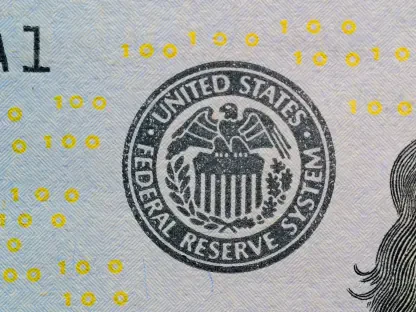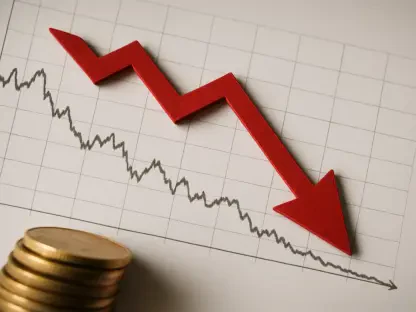In a climate of economic uncertainty, President Donald Trump’s ongoing feud with Federal Reserve Chair Jerome Powell has captured national attention, raising critical questions about the future of U.S. monetary policy and its broader implications. With interest rates impacting everything from mortgage payments to business investments, the tension between the executive branch and the central bank has sparked heated debates among policymakers, economists, and industry leaders. This roundup dives into diverse perspectives on Trump’s vocal dissatisfaction with Powell, particularly over the pace of rate cuts, and explores whether a leadership change at the Fed is imminent. By gathering insights from various sources, the goal is to unpack the complexity of this clash and its potential impact on financial stability.
Unpacking Diverse Views on Trump’s Federal Reserve Frustration
The backdrop of Trump’s criticism, aired publicly at events like the U.S.-Saudi Investment Forum in Washington, D.C., centers on his belief that the Federal Reserve is hampering economic growth. Many observers note that Trump has repeatedly targeted Powell for not slashing interest rates quickly enough, arguing that high borrowing costs are a barrier to prosperity. This sentiment resonates with certain business leaders who feel that lower rates could spur investment and job creation in a sluggish market.
However, not all stakeholders agree on the severity of the issue or the appropriateness of Trump’s approach. Some economic analysts emphasize the importance of the Fed’s independence, suggesting that political pressure could erode trust in the institution. They point out that the central bank’s decisions are grounded in data, not political agendas, and caution against undermining a system designed to prioritize long-term stability over short-term gains.
Further opinions highlight the broader implications of this public spat. Financial commentators argue that the uncertainty surrounding Trump’s intentions—whether rhetorical or actionable—could unsettle markets already grappling with inflation concerns. The consensus among these voices is that while frustration over policy is understandable, the dialogue must shift toward constructive solutions rather than personal critiques of leadership.
Analyzing the Trump-Powell Conflict Through Multiple Lenses
Perspectives on Trump’s Critique of Interest Rate Policies
Trump’s primary grievance, as echoed by numerous supporters in the business sector, is the Federal Reserve’s cautious approach to lowering interest rates. Many corporate executives share the view that the current range of 3.75%-4%, even after a recent quarter-point cut, keeps borrowing too expensive for rapid expansion. They align with Trump’s call for immediate reductions to stimulate economic activity, especially in industries reliant on loans.
In contrast, central banking experts often defend the Fed’s measured pace, pointing to internal divisions revealed in meeting minutes as evidence of careful deliberation. They argue that abrupt rate cuts could fuel inflation or destabilize financial systems, a concern that outweighs the demand for quick relief. This camp stresses that the Fed must balance political expectations with economic indicators, a task made harder by public criticism.
A third viewpoint comes from independent economists who see merit in both sides but warn of deeper risks. They suggest that the ongoing tension could weaken public confidence in monetary policy, regardless of who is right. The focus, according to these analysts, should be on fostering dialogue between the administration and the Fed to align goals without compromising autonomy.
Opinions on Internal Administration Divisions Over Powell
Within Trump’s administration, the split over Powell’s future has drawn varied reactions from political analysts. Some insiders note that Treasury Secretary Scott Bessent’s reported plea to let Powell serve until his term ends in May 2026 reflects a pragmatic stance, prioritizing continuity. This perspective is favored by those who believe stability in Fed leadership is critical during economic uncertainty.
On the other hand, voices aligned with Commerce Secretary Howard Lutnick, as interpreted through Trump’s accounts, advocate for a bolder move to replace Powell. Certain policy advisors argue this could allow Trump to install a chair more aligned with his economic vision, potentially accelerating rate cuts. Supporters of this view see it as a chance to reset the Fed’s direction in favor of aggressive growth policies.
Yet, a segment of governance experts cautions against such internal discord, highlighting the risk of mixed messaging on economic strategy. They contend that conflicting stances within the administration could confuse investors and policymakers alike. A unified approach, even if critical of the Fed, would better serve the goal of coherent national policy, according to these observers.
Views on the Hunt for Powell’s Potential Replacement
The administration’s active search for Powell’s successor, reportedly involving Bessent, has sparked a range of reactions. Some political strategists view this as a calculated step to reshape monetary policy, suggesting that a new chair could prioritize Trump’s agenda of lower rates. This perspective is popular among those who see the Fed as overly cautious and in need of fresh leadership.
Conversely, financial policy veterans express skepticism about the ease of such a transition. They argue that replacing Powell does not guarantee policy shifts, given the Fed’s institutional independence and the collective decision-making of its board. This group urges caution, warning that a hasty change could disrupt established processes without delivering the desired outcomes.
A balanced take comes from market analysts who acknowledge the strategic intent behind scouting candidates but question the timing. With key Fed decisions looming, such as the upcoming December meeting, they suggest that any leadership change should be timed to minimize market volatility. Their advice centers on transparency during the selection process to maintain trust among stakeholders.
Differing Takes on Trump’s Rhetoric Versus Action
Trump’s sharp language, including his stated desire to “fire” Powell, has been met with mixed interpretations. Some media commentators describe it as theatrical, designed to rally public support rather than signal concrete action. They point to lighter moments, like Trump’s humorous jabs at Bessent’s job security, as evidence of rhetorical flair over serious intent.
In contrast, economic policy watchers see a more deliberate strategy behind the bluster, especially given the White House’s tempered confidence in Bessent alongside the search for a new chair. They argue that this duality reflects a calculated balance—using strong words to pressure the Fed while planning for potential change. This view suggests the rhetoric is a tool, not mere theatrics.
A separate angle from public opinion researchers focuses on how this dynamic shapes perceptions of Trump’s economic agenda. They note that while the dramatic tone grabs headlines, it risks overshadowing substantive policy debates. Their concern is that prolonged focus on personal conflicts could erode credibility for both the administration and the Fed among everyday Americans.
Key Takeaways from the Trump-Fed Dispute
Synthesizing the myriad perspectives, it’s clear that Trump’s frustration with Powell over high interest rates remains a central issue, echoed by business leaders seeking faster cuts. The administration’s internal divide, with contrasting views on Powell’s tenure, adds complexity, as does the active pursuit of a replacement. Financial and policy experts offer cautionary notes on the risks to Fed independence and market stability, while others see opportunity in aligning leadership with Trump’s goals.
For stakeholders, staying attuned to upcoming Fed decisions, particularly in the next meeting cycle, is critical for gauging policy direction. Policymakers are advised to navigate political pressures while safeguarding economic stability, ensuring decisions reflect data over rhetoric. Keeping abreast of credible economic analyses and official statements can help cut through the noise of dramatic public discourse.
Why This Clash Resonated and What Lies Ahead
Looking back, the saga between Trump and Powell underscored critical tensions over the Federal Reserve’s role and independence, with opinions sharply divided on the path forward. The debate revealed deep concerns about monetary policy’s impact in a volatile economy, as well as the delicate balance between political influence and central bank autonomy. It also highlighted how public rhetoric could amplify or obscure substantive issues.
Moving forward, stakeholders should prioritize monitoring Fed actions for signs of compromise or resistance to external pressure. Exploring educational resources on central banking principles can provide clarity on the stakes involved. Ultimately, fostering a dialogue that respects institutional boundaries while addressing economic needs could pave the way for more stable, collaborative solutions in the years ahead.









